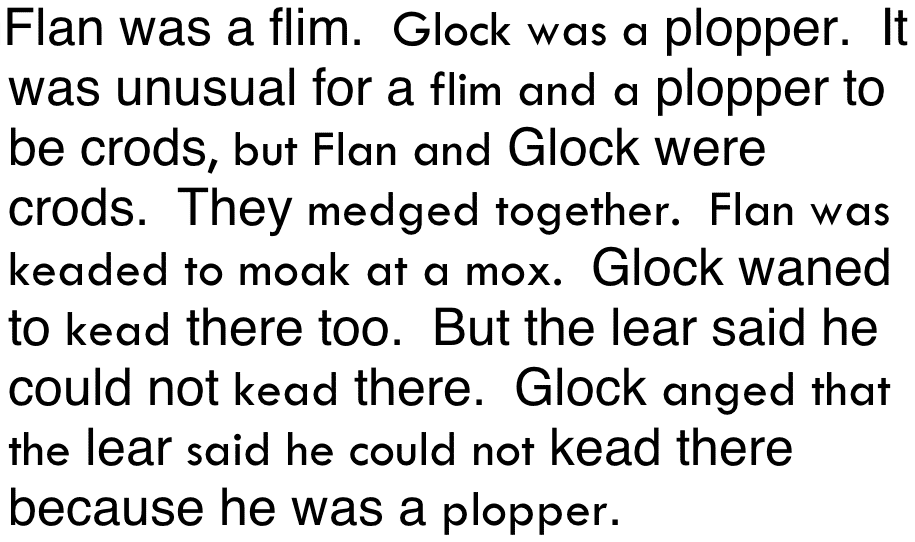Writing titles
First one
[ You're not expected to understand everything that's going on. Nevertheless, try your best to write a descriptive title that captures the essence and news-worthiness in this passage!! You don't have to write a grammatically complete sentence for the title. (You probably shouldn't.) ]

Second one
[ You're not expected to understand everything that's going on. Nevertheless, try your best to write a descriptive title that captures the essence and news-worthiness in this passage!! You don't have to write a grammatically complete sentence. ]
"I'm going to hear from my colleagues: 'So, you've discovered water on Mars for the thousandth time?' " says planetary scientist Alfred McEwen of the University of Arizona in Tucson. Actually, it's much better than that. Using the most powerful camera ever to orbit Mars, McEwen and his colleagues are reporting the strongest evidence yet for water on Mars that's flowing, not frozen—and the water is flowing today, not a millennium or an eon ago.
At a few spots, the meager warmth of martian summer seems able to coax enough liquid water out of the ground to darken the soil in streaks. The marks, which sometimes number in the hundreds, grow downhill hundreds of meters only to fade with the winter cold. And where there is liquid water, as they say, there could be life.
The newly recognized seasonal streaks are like nothing else on Mars, McEwen and his colleagues reported last March at the Lunar and Planetary Science Conference—a finding that they also publish online today in Science. That's because nothing else—no other streaks or gullies—behaves as if flowing water is forming it today, they say.
Seasonal streaks act as if elevated temperatures around the melting point of water ice unleash liquid water. By monitoring the same areas using the HiRISE camera aboard Mars Reconnaissance Orbiter, the team watched the shapes cycle with the seasons. Dark streaks a few meters wide grew from rocky outcrops down steep, equator-facing slopes beginning in the martian spring and continuing until the early fall (as in the animated HiRISE imagery above). In the colder seasons, the streaks faded away.
Measurements made by another orbiter show that areas marked by seasonal streaks are basking in solar warmth like sunbathers trying to catch the maximum rays on a cool spring day. As a result, surface temperatures rise to within 20°C to 30°C of the melting point of ice when seasonal streaks are forming. Given that the Phoenix lander found abundant salts in martian soil that can lower the freezing point of any water present, the observed near-freezing temperatures look sufficient to allow flowing, briny water on or just beneath the martian surface.
"This may be our best evidence yet of liquid water emerging on the surface of Mars," says planetary scientist Oded Aharonson of the California Institute of Technology in Pasadena. Flowing water is not yet proven, he says, but "I would bet my bike on this, and probably my car, but I wouldn't bet my house on it."
"It's exciting," says planetary scientist Joseph Levy of Portland State University in Oregon. "Mars looks more like the Dry Valleys of Antarctica every day." That's the largely ice-free part of the continent where trickles of summertime meltwater can dampen slopes and support a hardscrabble microbial population, including algae, just beneath the surface. A damp subsurface is where life is most likely to be found today on Mars, notes McEwen. "Now we see perhaps some groundwater is coming to the surface. It gives us a location to focus on" as NASA continues to "follow the water" in search of martian life, past or present.
Next, read Jakob Nielsen on scanning pages, have students re-write.
Zipf (1954) observed that.... if you make a table of word occurrences (N) ranked in frequency order (o)...
$$N\propto k/o$$
That means, if you plot it on a log-log plot....
$$(\log N) \propto log K -1(\log o)$$
Wikipedia...most common words are $o=1$: 'the', $o=2$: 'and', $o=3$: 'of', etc.

Two physicists at the Santa Fe Institute Least effort and the origins of scaling in language (R. Ferrer i Cancho, R. Sole) posit that a simple model which approximately balances the efforts of speaker and listener leads to this kind of distribution.
Let's say your inbox looks like this:

- Which communicates something central to that article?
- Too little? Too much?
Word frequencies
An ordered list of the most common words in the English language
High-frequency words--do they convey much information?
Information-rich words: low-frequency, uncommon, distinctive words or proper nouns.
Titles: Lead with Information-rich words (F-shaped patter for reading web pages (eye tracking studies))
 Post your group's best title in this shared document at
Post your group's best title in this shared document at